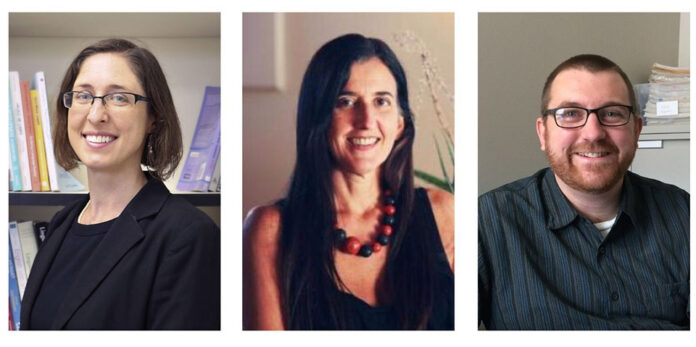Last week the University of Texas Rio Grande Valley announced that two linguists on staff at the school’s Edinburg campus won a federal grant to expand their work documenting the unique blend of languages spoken across the Rio Grande Valley.
Code switching, the professors explained, is a sophisticated process demonstrating high linguistic ability in bilingual individuals. Their research highlights the Valley’s relationship to language, the way bilingualism is viewed locally, and seeks to engage the community in that process.
“ It has been 50 plus years that linguists have documented how code switching is a really sophisticated process. It’s patterned; there are very specific ways that people will or won’t switch between languages, and that gives us insight into language and how our brains work with language,” said Dr. Katherine Christoffersen, one of the two grantees.
Christoffersen is the project director and principal investigator on the grant, together with Dr. Ryan Bessett and Dr. Ana Carvalho (based at the University of Arizona). Carvalho’s work creating a corpus documenting the language of Southern Arizona inspired Christoffersen and Bessett to initiate a similar project in the Valley upon relocating to teach at UTRGV.
The $60,000 Humanities Collections and References Resource grant for the project, Bilingual Voices in the U.S./Mexico Borderlands, funded through the National Endowment for the Humanities (neh.gov) will be used to expand two online collections of community interviews called Corpus Bilingüe del Valle (CoBiVa) and Corpus de Español del Sur de Arizona (CESA). is funded through the National Endowment for the Humanities.
Funding will be used to initiate student participation in the research and will test methods of transcription. Researchers hope that it will become a valuable resource for the community to study the blend of language spoken across our communities. Ultimately, they want the corpus to be used in the classroom to include the local dialect in the teaching of subjects like Spanish grammar.
Through this process, students learn that language is constantly developing and that stigmas attached to bilingual speakers in border communities have nothing to do with their linguistic ability. “It’s showing the students that their way of speaking is a legitimate way of speaking and that it has value in higher education,” said Bessett. “If they see their own Spanish being used as a model in class when we talk about grammar — that really brings prestige to that local dialect.”
A collection of research and interviews like a corpus can be an integral part of recording a community’s history and culture so that those means of expression can be referenced and understood across future generations. Christoffersen specified that every person speaks numerous dialects and has multiple ways of speaking with others.
“ We’re creating this collection of sociolinguistic interviews from the Valley so we can learn more about Mexican-American English as well as local practices of speaking Spanish,” she said.
“ I always tell my students that we need to stop thinking of bilinguals as two monolinguals. Being bilingual is such a different and unique experience. Bilinguals have really enhanced abilities as far as metalinguistic skills and an understanding about languages and the way they work. If you’re speaking to someone who’s bilingual, why wouldn’t you use two languages?”
Researchers look at things like age, attitude towards language, and where code switching is used in sentence structure. In the Valley, Bessett has encountered students who feel they don’t speak Spanish despite growing up with a solid foundation in the language.
He recalled meeting with a student after class who felt like she couldn’t keep up with bilingual conversation between Bessett and students, as he teaches in a mixture of the languages. They held an entire conversation in Spanish. “She said, ‘I don’t speak Spanish, I speak pocho’. It’s this internalization that whatever they speak — they know it might not be English, but they don’t feel like it’s Spanish, which it actually is.”
The integration of English words into the Spanish spoken in border communities — referred to as borrowings — is common in entirely different contexts, and even in monolingual communities, like in Spain. “In Spain, they don’t say ‘tocino’, they say ‘bacon’,” Bessett explained.
“ It shows us that the reason people have negative attitudes towards borrowings doesn’t have anything to do with the linguistic part — it has to do with who these people are. In the Valley, people come from the bilingual setting, they come from a place where they didn’t take classes in Spanish. Why is it that a monolingual speaker can borrow words and that’s seen as sophisticated and worldly yet we have bilingual speakers here borrowing words and they’re being told they don’t know Spanish?”
The researchers hope to engage the community through events and presentations featuring the developing corpora in the future. The collected interviews are conversational and personal in order to tease out natural, interesting language patterns.
The Valley’s corpus can be accessed here: https://www.utrgv.edu/cobiva/.





